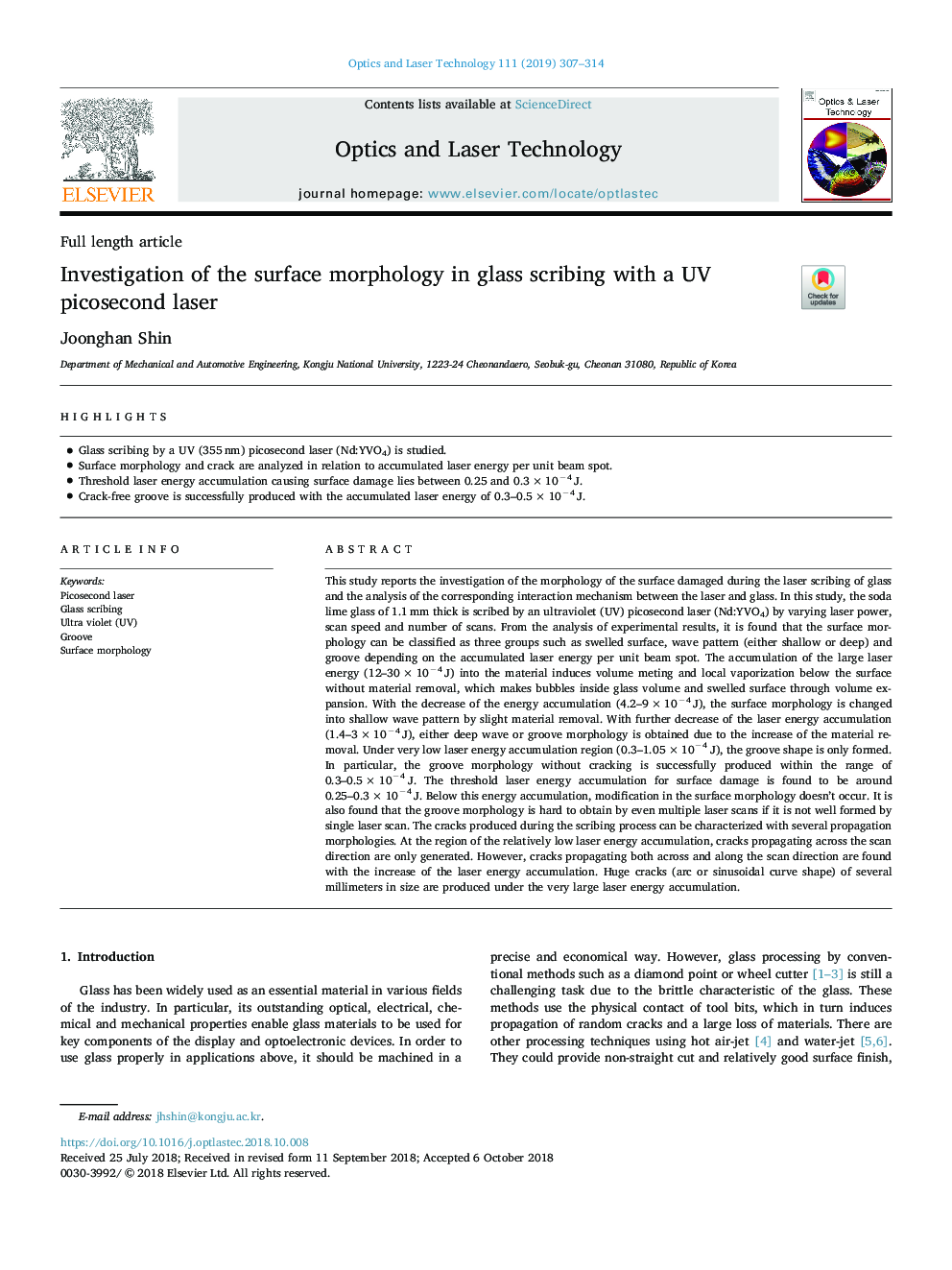| کد مقاله | کد نشریه | سال انتشار | مقاله انگلیسی | نسخه تمام متن |
|---|---|---|---|---|
| 11263356 | 1701262 | 2019 | 8 صفحه PDF | دانلود رایگان |
عنوان انگلیسی مقاله ISI
Investigation of the surface morphology in glass scribing with a UV picosecond laser
دانلود مقاله + سفارش ترجمه
دانلود مقاله ISI انگلیسی
رایگان برای ایرانیان
موضوعات مرتبط
مهندسی و علوم پایه
سایر رشته های مهندسی
مهندسی برق و الکترونیک
پیش نمایش صفحه اول مقاله

چکیده انگلیسی
This study reports the investigation of the morphology of the surface damaged during the laser scribing of glass and the analysis of the corresponding interaction mechanism between the laser and glass. In this study, the soda lime glass of 1.1â¯mm thick is scribed by an ultraviolet (UV) picosecond laser (Nd:YVO4) by varying laser power, scan speed and number of scans. From the analysis of experimental results, it is found that the surface morphology can be classified as three groups such as swelled surface, wave pattern (either shallow or deep) and groove depending on the accumulated laser energy per unit beam spot. The accumulation of the large laser energy (12-30â¯Ãâ¯10â4â¯J) into the material induces volume meting and local vaporization below the surface without material removal, which makes bubbles inside glass volume and swelled surface through volume expansion. With the decrease of the energy accumulation (4.2-9â¯Ãâ¯10â4â¯J), the surface morphology is changed into shallow wave pattern by slight material removal. With further decrease of the laser energy accumulation (1.4-3â¯Ãâ¯10â4â¯J), either deep wave or groove morphology is obtained due to the increase of the material removal. Under very low laser energy accumulation region (0.3-1.05â¯Ãâ¯10â4â¯J), the groove shape is only formed. In particular, the groove morphology without cracking is successfully produced within the range of 0.3-0.5â¯Ãâ¯10â4â¯J. The threshold laser energy accumulation for surface damage is found to be around 0.25-0.3â¯Ãâ¯10â4â¯J. Below this energy accumulation, modification in the surface morphology doesn't occur. It is also found that the groove morphology is hard to obtain by even multiple laser scans if it is not well formed by single laser scan. The cracks produced during the scribing process can be characterized with several propagation morphologies. At the region of the relatively low laser energy accumulation, cracks propagating across the scan direction are only generated. However, cracks propagating both across and along the scan direction are found with the increase of the laser energy accumulation. Huge cracks (arc or sinusoidal curve shape) of several millimeters in size are produced under the very large laser energy accumulation.
ناشر
Database: Elsevier - ScienceDirect (ساینس دایرکت)
Journal: Optics & Laser Technology - Volume 111, April 2019, Pages 307-314
Journal: Optics & Laser Technology - Volume 111, April 2019, Pages 307-314
نویسندگان
Joonghan Shin,